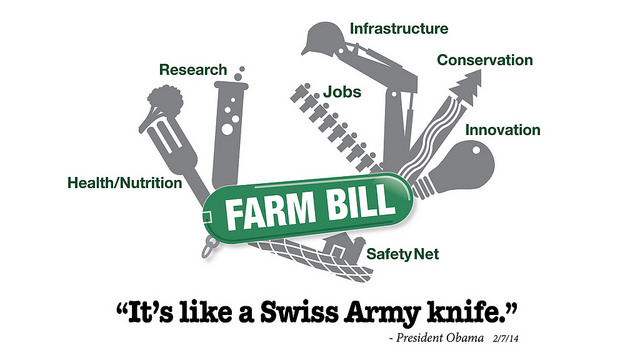The Farm Bill and Food Banking: A Recipe for Success
septiembre 8, 2017
No ofrecemos comida. Aquí es donde puedes Encuentre comida gratis aquí.
No distribuimos alimentos. Encuentre comida gratis aquí.
我們不直接提供食物,但我們能幫助您找尋食物。

If you work in a food bank, pantry or any local agency that serves food-insecure communities, you might have heard about the upcoming Farm Bill. Join us for an exploration of its history and importance to food banks and anti-hunger advocates.
The Farm Bill is the nation’s most critical piece of food and farming legislation. It represents the primary federal investment in the country’s largest anti-hunger programs including the Supplemental Nutrition Assistance Program (SNAP, known as CalFresh in California) and other core programs like (TEFAP), which provides essential commodities to food banks and the Commodity Supplemental Food Program (CSFP), which provides vital nutrition for elderly and homebound individuals.

To better understand the history of the Farm Bill, we must begin in 1933 with a part of Franklin D. Roosevelt’s New Deal, which focused on relief, recovery, and reform after The Great Depression. The Agricultural Adjustment Act planted the seeds for the Farm Bill. At the time, the federal government decided to offer farmers incentives to not produce more food than needed. The program also included the purchase of discounted surplus for distribution among hunger relief organizations.
Fast forward about thirty years to President Lyndon Johnson’s War on Poverty and the introduction of the Food Stamp Act of 1964. The Food Stamp Act aimed to bolster the agricultural sector and boost nutrition for low-income individuals via the purchase of stamps/coupons for food, with extra awarded based on income level. Then in 1973, the Farm Bill expanded to include the food stamp program.
In the late 1960s and early 1970s, the country’s population grew less rural and more focused on urban issues. Even television reflected the shift with its rural purge moving from country-themed shows to more urban settings. Farmers felt the waning interest, and many showed up to protest in DC via tractors in 1979. (Read more here.)
By integrating nutrition and agricultural programs together into the Farm Bill, it engaged a growing spectrum of stakeholders and advocates, like the Food and Research Action Center and the California Rice Commission, invested in our country’s shared agricultural and nutrition priorities. Nutrition programs, the largest of which is SNAP, made up 80% of the most recent Farm Bill Act of 2014. The other 20% focused on items such as crop insurance, training for farmers, support for sustainable farming, and rural development.
Since the Farm Bill expires every five years, the House Agriculture Committee is now conducting research for the next one. With SNAP already facing massive cuts in the proposed House budget, there is a critical need to protect the program in the Farm Bill. CAFB and several member food bank partners participated in two Farm Bill listening sessions to share the importance of SNAP with members of the House Agriculture Committee. California’s Farm Bill recommendations, utilizing input from 70+ diverse stakeholder organizations, five statewide public listening sessions and contributions from state government agencies stated, “Without exception there was strong support for keeping the nutrition title as part of the Farm Bill” and included “robust funding for food and nutrition programs” as the first recommendation.

“When I began anti-hunger work in the 1970s, emergency food pantries provided three days of food so people could feed their children while they gathered the necessary information to apply for food stamps or other assistance,” said Larry Sly, executive director of Food Bank of Contra Costa and Solano. “Today, food banks are an integral part of the safety net. But no matter how effective food banks are, people who come to the pantries get only the food we have available. With SNAP/CalFresh, people can go to a grocery store and buy the food they need.”
“Food banks are a community resource that cannot do their work in a bubble,” agreed Tom Tenorio, CEO of the Community Action Agency of Butte County. “For many food banks, one important partner is the agricultural community, which helps provide nutritious food. Another vital lifeline is the nutrition safety net, which has become a support system for food banks savvy to the fact that more can be accomplished with more partners. The intentional inclusion of governmental programs like SNAP, TEFAP, and CSFP have become key to the vision of food banks helping households to not only not be hungry but also be healthier. As a part of that network of groups with strong interests in conditions impacted by a good or bad Farm Bill, it is appropriate for food banks to ensure that they are a part of the debate. "
As 2018 and the next Farm Bill inch closer, make sure your voice is heard. Food banks, as important as their work is, only provide 5% of the food assistance in this country. Cutting government programs would push charitable organizations well beyond their capacity and increase hunger and harm throughout our state.